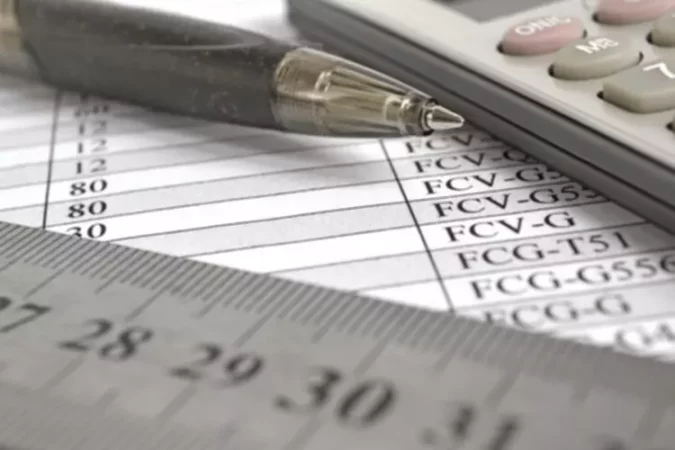
Any remaining balance in the Prepaid Insurance account is what you have left to use in the future; it continues to be an asset since it is still available. At the end of the month 1/12 of the prepaid insurance will be used up, and you must account for what has expired. After one month, $100 of the prepaid amount has expired, and you have only 11 months of prepaid insurance left. In addition, on your income statement you will show that you did not use ANY insurance to run the business during the month, when in fact you used $100 worth. Deferrals are adjusting entries for items purchased in advance and used up in the future (deferred expenses) or when cash is received in advance and earned in the future (deferred revenue). These adjustments are made to more closely align the reported results and financial position of a business with the requirements of an accounting framework, such as GAAP or IFRS.
Rather than recording the item as an expense when you purchase it, you record it as an asset (something of value to the business) since you will not use it all up within a month. At the end of the month, you make an adjusting entry for the part that you did use up—this is an expense, and you debit the appropriate expense account. The credit part of the adjusting entry is the asset account, whose value is reduced by the amount used up. Any remaining balance in the asset account is what you still have left to use up into the future. Adjusting entries enable you to adjust revenues and expenses to the accounting period within which they occurred.
- The same adjusting entry above will be made at the end of the month for 12 months to bring the Prepaid Taxes amount down by $100 each month.
- In a periodic inventory system, an adjusting entry is used to determine the cost of goods sold expense.
- During the month you will use some of these taxes, but you will wait until the end of the month to account for what has expired.
- Any remaining balance in the Prepaid Rent account is what you have left to use in the future; it continues to be an asset since it is still available.
The major objective of the adjusting journal entries is to change cash transactions to an accrual accounting method. It depends on the revenue recognition principle that identifies revenue earned in that specific period rather than the period where cash was received. In such a case, the adjusting journal entries are used to reconcile these differences in the timing of payments as well as expenses. Without adjusting entries to the journal, there would remain unresolved transactions that are yet to close. The adjusting entry for taxes updates the Prepaid Taxes and Taxes Expense balances to reflect what you really have at the end of the month.
Automate Adjusting Entries With NetSuite
For example, if you place an order in January, but it doesn’t arrive (and you don’t make the payment) until January, the company that you ordered from would record the cost as unearned revenue. Then, in the month you make the purchase, an adjusting entry would debit unearned revenue and credit revenue. As shown in the preceding list, adjusting entries are most commonly of three types. The first is the accrual entry, which is used to record a revenue or expense that has not yet been recorded through a standard accounting transaction. The second is the deferral entry, which is used to defer a revenue or expense that has been recorded, but which has not yet been earned or used.

The word “expense” implies that the supplies will be used within the month. An expense is a cost of doing business, and it cost $100 in supplies this month to run the business. Here are the Supplies and Supplies Expense ledgers AFTER the adjusting entry has been posted.
Inventory
In accounting/accountancy, adjusting entries are journal entries usually made at the end of an accounting period to allocate income and expenditure to the period in which they actually occurred. The revenue recognition principle is the basis of making adjusting entries that pertain to unearned and accrued revenues under accrual-basis accounting. They are sometimes called Balance Day adjustments because they are made on balance day.
Prepaid expenses are assets that you pay for and use gradually throughout the accounting period. Office supplies are a good example, as they’re depleted throughout the month, becoming an expense. Essentially, in the month that the expense is used, an adjusting entry needs to be made to debit the expense account and credit the prepaid account. Also known as accrued liabilities, accrued expenses are expenses that your business has incurred but hasn’t yet been billed for.
You prepaid for a one-year business license during the month and initially recorded it as an asset because it would last for more than one month. By the end of the month some of the prepaid taxes expired, so you reduced the value of thisasset to reflect what you actually had on hand at the end of the month ($1,100). To transfer what expired, Taxes Expense was debited for the amount used and Prepaid Taxes was credited to reduce the asset by the same amount. Any remaining balance in the Prepaid Taxes account is what you have left to use in the future; it continues to be an asset since it is still available.
Depreciation and Amortization
Adjusting entries for prepayments are necessary to account for cash that has been received prior to delivery of goods or completion of services. Companies that use accrual accounting and find themselves in a position where one accounting period transitions to the next must see if any open transactions exist. Although fixed assets cost a company money, they are not initially recorded as expenses. (Notice in the journal entry above that the debit account is “Equipment,” NOT “Equipment Expense”). Fixed assets are first recorded as assets that later are gradually “expensed off,” or claimed as a business expense, over time. At the end of the month 1/12 of the prepaid taxes will be used up, and you must account for what has expired.
What is the purpose of basic accounting adjusting entries?
It is usually not possible to create financial statements that are fully in compliance with accounting standards without the use of adjusting entries. Thus, adjusting entries are created at the end of a reporting period, such as at the end of a month, quarter, or year. There are also many non-cash items in accrual accounting for which the value cannot be precisely determined by the cash earned or paid, and estimates need to be made. The entries for these estimates are also adjusting entries, i.e., impairment of non-current assets, depreciation expense and allowance for doubtful accounts.
Depreciation
To transfer what was used, Supplies Expense was debited for the amount used and Supplies was credited to reduce the asset by the same amount. Any remaining balance in the Supplies account is what you have left to use in the future; it continues to be an asset since it is still available. Unearned revenues are payments for goods/services that are yet to be delivered.
Deferrals refer to revenues and expenses that have been received or paid in advance, respectively, and have been recorded, but have not yet been earned or used. Unearned revenue, for instance, accounts for money received for goods not yet delivered. Since the Accumulated Depreciation account was credited in the adjusting entry rather than the Equipment account directly, the Equipment account balance remains at $6,000, its cost. The adjusting entry above is made at the end of each month for 60 months. The same adjusting entry above will be made at the end of the month for 12 months to bring the Prepaid Taxes amount down by $100 each month.
An expense is a cost of doing business, and it cost $100 in business license taxes this month to run the business. These are the five adjusting entries for deferred expenses we will cover. In contrast to accruals, deferrals are cash prepayments that are made prior to the actual consumption or sale of goods and services. For example, a company that has a fiscal year ending December 31 takes out a loan from the bank on December 1. The terms of the loan indicate that interest payments are to be made every three months.
